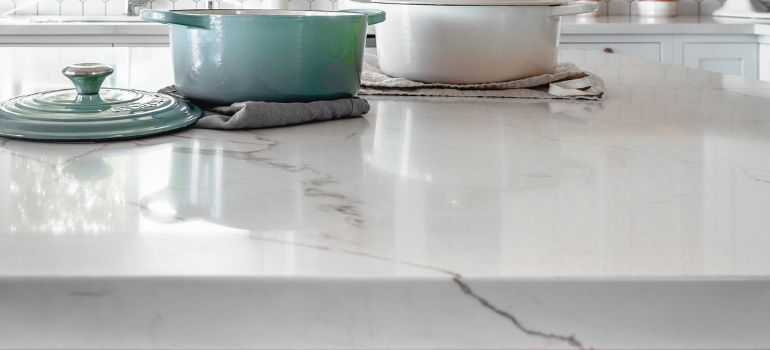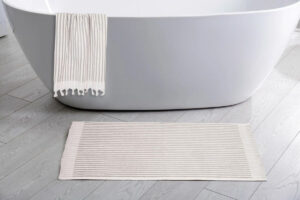Introduction
Rust-Oleum countertop paint is a popular choice for homeowners looking to give their kitchen or bathroom countertops a fresh new look. However, there may come a time when you want to change the color or remove the paint altogether. In this article, we will guide you through the step-by-step process of removing Rust-Oleum countertop paint, ensuring your countertops are ready for a new finish or restoration.
Understanding Rust-Oleum Countertop Paint
Before we delve into the removal process, it’s essential to understand what Rust-Oleum countertop paint is and how it works. This knowledge will help you make informed decisions and avoid any pitfalls during the removal process.
What is Rust-Oleum Countertop Paint?
Rust-Oleum countertop paint is a durable, water-based coating designed to transform the appearance of laminate countertops. It provides a smooth and glossy finish that mimics the look of natural stone, making it an attractive and cost-effective alternative to expensive countertop replacements.
The Tools and Materials You Will Need
Before starting the removal process, gather the necessary tools and materials to ensure a smooth and efficient operation. Here’s what you’ll need:
Tools:
- Screwdriver
- Plastic putty knife
- Painter’s tape
- Sandpaper (medium and fine grit)
- Paint stripper (if necessary)
- Safety goggles and gloves
Materials:
- Drop cloths or plastic sheets
- Respirator mask (if using paint stripper)
- Chemical-resistant gloves (if using paint stripper)
- Water and soap
Step-by-Step Guide to Removing Rust-Oleum Countertop Paint

Now that you have your tools and materials ready, let’s proceed with the paint removal process:
Step 1: Prepare the Area
- Begin by laying down drop cloths or plastic sheets to protect your surrounding area from any paint debris or spills.
- Put on safety goggles and gloves to protect yourself during the removal process.
Step 2: Remove Any Loose Paint
- Use a screwdriver or plastic putty knife to gently scrape off any loose or peeling paint from the countertop surface.
Step 3: Sand the Countertop
- Sand the entire countertop surface using medium-grit sandpaper. This step helps to roughen the painted surface, making it easier for the paint to adhere to the countertop.
Step 4: Apply Paint Stripper (if necessary)
- If the paint is stubborn and doesn’t come off with sanding, you can use a paint stripper. Follow the manufacturer’s instructions for application and wait for the specified time.
Step 5: Scrape Off the Paint
- Use a plastic putty knife to scrape off the paint gently. Be cautious not to damage the countertop surface.
Step 6: Clean the Countertop
- After successfully removing the paint, clean the countertop thoroughly using water and soap to remove any residue.
Step 7: Sand for a Smooth Finish
- To ensure a smooth and even surface, sand the countertop again with fine-grit sandpaper.
Step 8: Final Cleaning
- Wipe down the countertop with a clean, damp cloth to remove any remaining dust or debris.
Additional Tips and Considerations
While the steps mentioned above provide a comprehensive guide to removing Rust-Oleum countertop paint, here are some additional tips and considerations to ensure a successful paint removal process:
1. Ventilation is Key
Ensure proper ventilation in the workspace. If you’re using a paint stripper, it may release fumes that can be harmful when inhaled. Open windows and doors or use fans to keep the area well-ventilated.
2. Choose the Right Paint Stripper
If you decide to use a paint stripper, make sure it is suitable for countertop surfaces. Always follow the manufacturer’s instructions and safety precautions when using chemical products.
3. Test in an Inconspicuous Area
Before applying a paint stripper to the entire countertop, perform a small test in an inconspicuous area to ensure it doesn’t damage the surface or cause discoloration.
4. Patience is a Virtue
Take your time during the paint removal process. Rushing may result in damage to the countertop or an uneven surface. Careful and patient work will yield better results.
5. Dispose of Materials Properly
Dispose of any paint chips or materials used for the removal process in accordance with local environmental regulations. Paint chips can be hazardous waste and should be handled responsibly.
6. Plan Your Next Steps
After successfully removing the paint, consider your next steps. You can opt to repaint the countertop with a new color, apply a protective sealant, or explore other countertop restoration options to achieve the desired look.
Conclusion
Removing Rust-Oleum countertop paint can be a DIY project that rejuvenates your kitchen or bathroom space. By following these steps and using the right tools, you can effectively remove the paint and prepare your countertops for a new finish or restoration.
FAQs (Frequently Asked Questions)
Yes, you can paint over it with a primer designed for laminate surfaces before applying your desired paint color.
The time required depends on the size of your countertop and the condition of the paint. It can take a few hours to a day.
Yes, safety goggles and gloves are essential to protect your eyes and hands from any potential hazards.
It’s recommended to use a paint stripper specifically designed for countertop surfaces for the best results.
Paint removal is a more cost-effective option compared to replacing your countertops entirely, which can be quite expensive.



